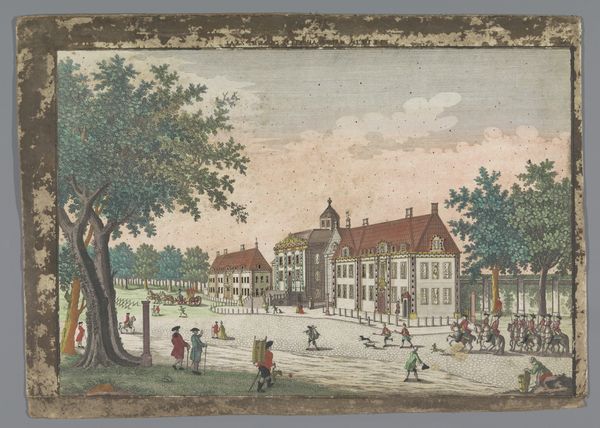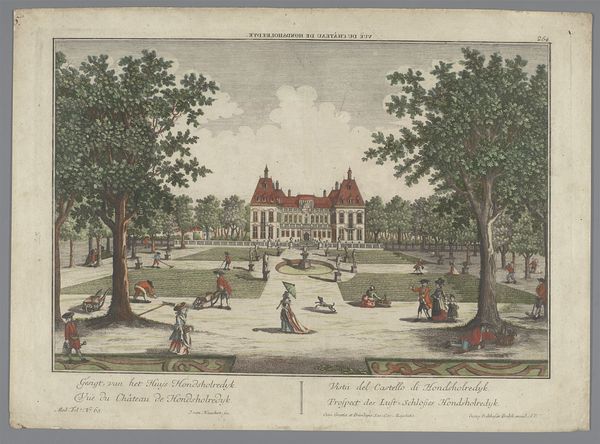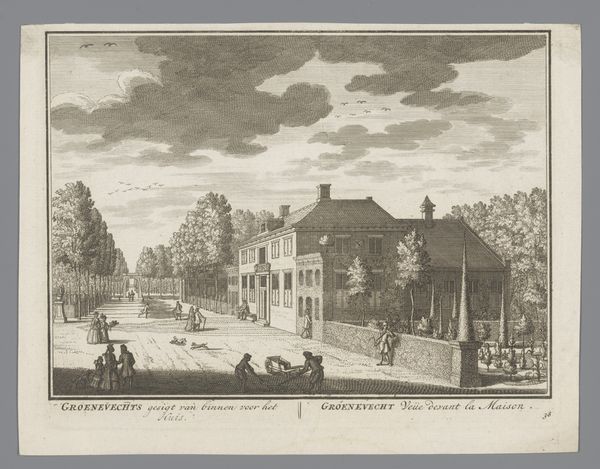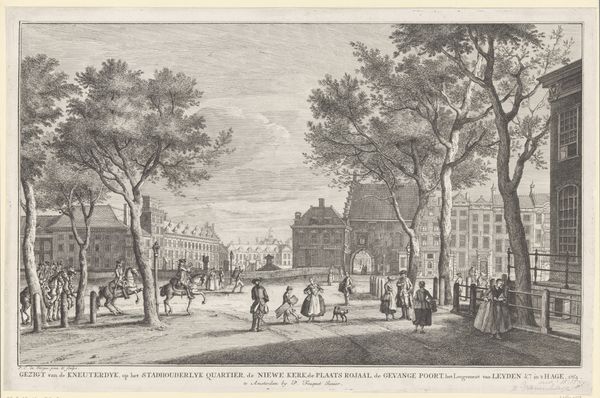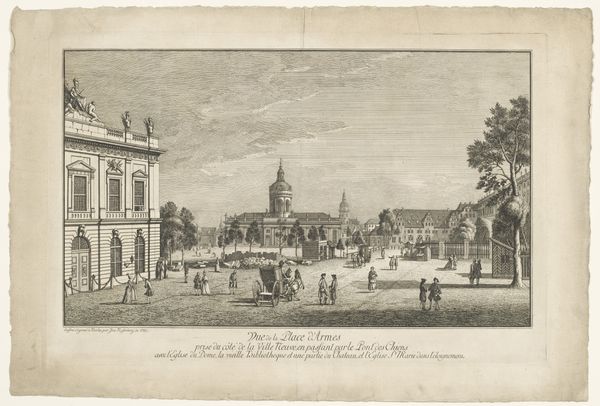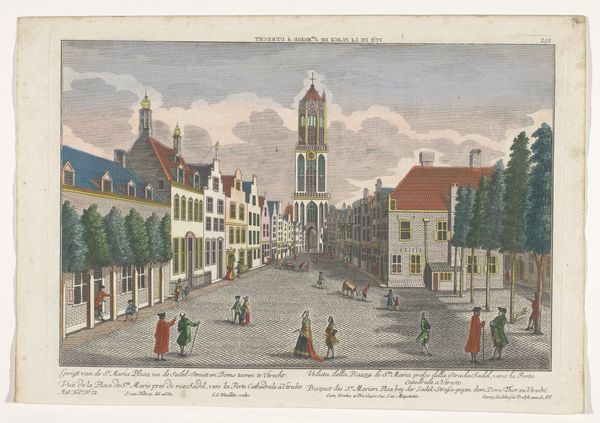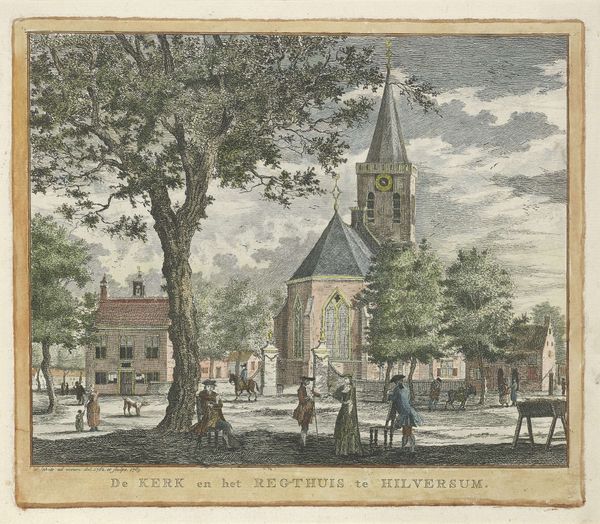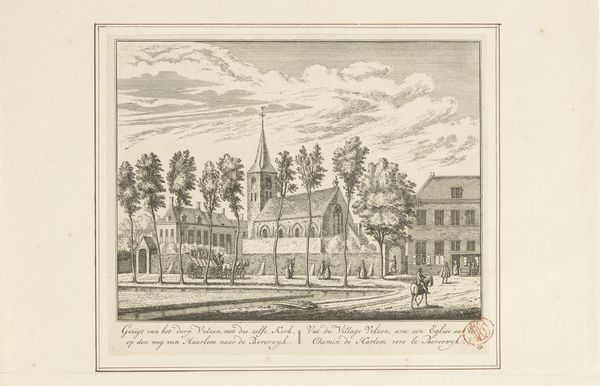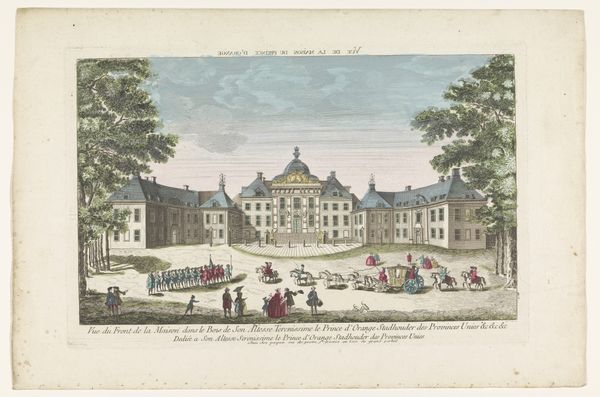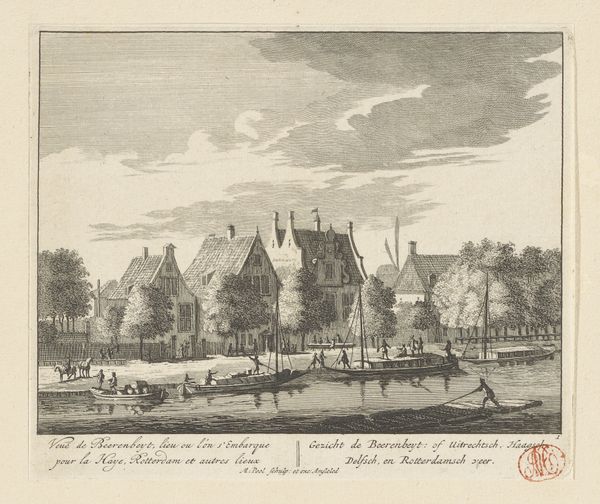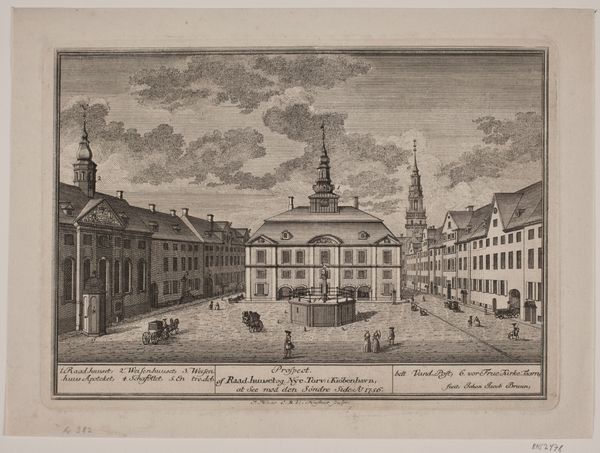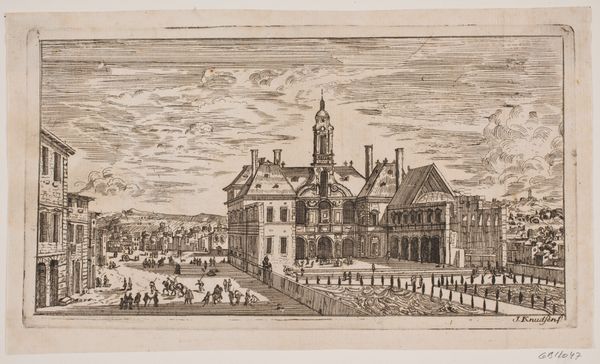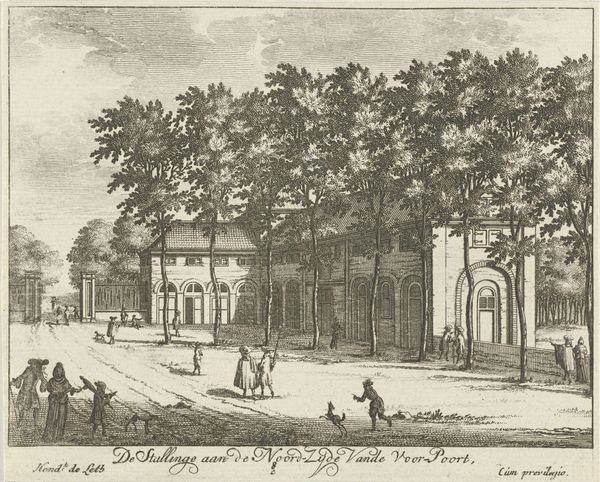
Gezicht op Paleis Huis ten Bosch met de Oranjezaal te Den Haag c. 1760 - 1800
0:00
0:00
isaacvanhaastert
Rijksmuseum
Dimensions: height 313 mm, width 428 mm
Copyright: Rijks Museum: Open Domain
Curator: Here we have a drawing attributed to Isaac van Haastert, dating from somewhere between 1760 and 1800. It’s rendered with pen, pencil, and colored pencil on paper, currently residing at the Rijksmuseum. The work is titled “Gezicht op Paleis Huis ten Bosch met de Oranjezaal te Den Haag”—“View of Huis ten Bosch Palace with the Oranjezaal in The Hague." Editor: It’s striking, actually. The meticulous detail gives it an almost dreamlike quality, despite the everyday scene it depicts. It has a pastel sort of feeling to it. Curator: The Oranjezaal is absolutely the focal point, its name translating to Orange Room or Orange Hall. Think of what the color orange would represent in the late 18th century Netherlands; this space would symbolize the Dutch Royal Family. Editor: And how interesting to see a city portrayed through a royal lens. Look at the activity here, the figures strolling, soldiers marching – a highly curated presentation of power, no? What could we make of all these symbols presented in the image? Curator: Well, the landscape itself becomes symbolic of stability and prosperity under the House of Orange. It serves to project a specific image of the Dutch Republic: orderly, vibrant, and undeniably under royal authority. Think of the compositional strategy used here! The artist shows a visual tie between the monarchy and the city's everyday occurrences. The Royal house as benefactors and rulers! Editor: Do you think it also suggests an artificial control? Everything seems perfectly arranged. Maybe it presents some sense of what's right for this period. I am interested in what happened to society then, through representation, because the symbols are there on purpose. Curator: Absolutely, I agree! I also think it's crucial to realize that even "realistic" depictions of landscapes, in art of the time, carry political messages, reinforcing the status of specific social frameworks through selective representation and idealized scenes of city life. It highlights the ways in which art institutions contribute to political discourses throughout different parts of cultural memory. Editor: This little artwork does quite a lot, actually. Makes me reflect on the long cultural life it has already had and on those it continues to produce. Curator: A very thought-provoking visual experience indeed. A slice of Dutch cultural and political life, captured for posterity.
Comments
No comments
Be the first to comment and join the conversation on the ultimate creative platform.
